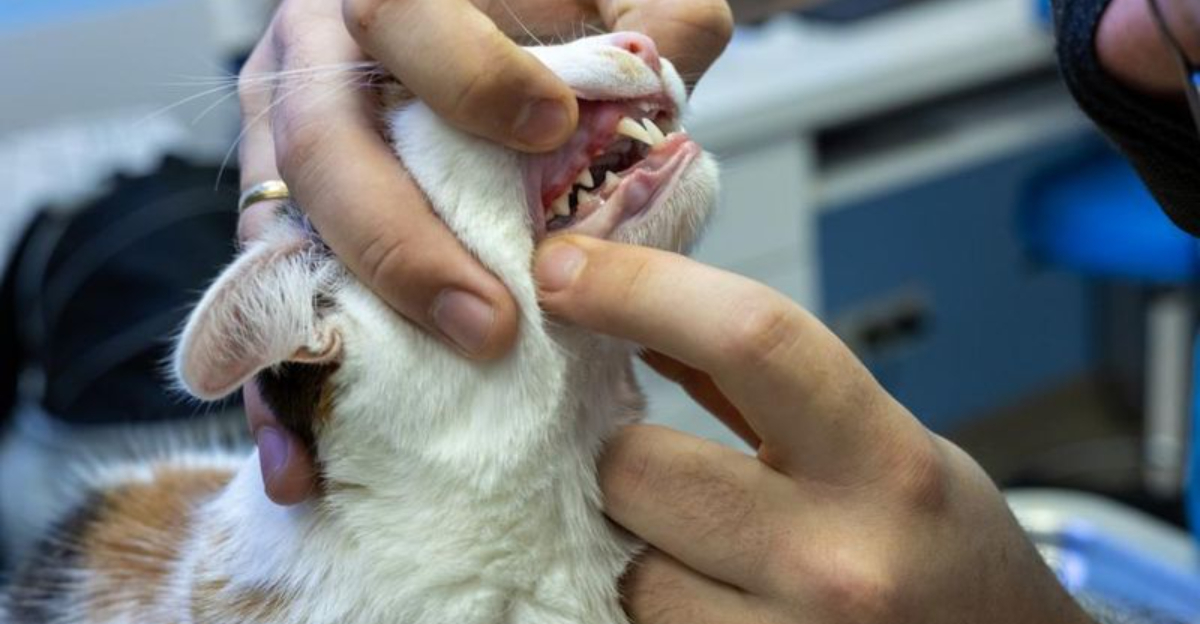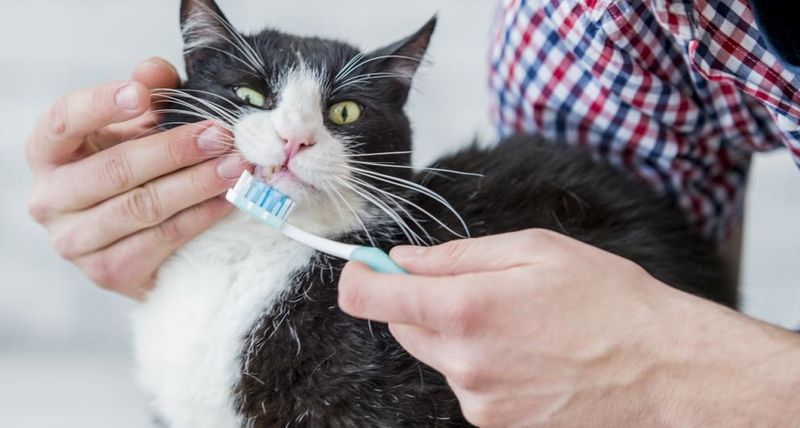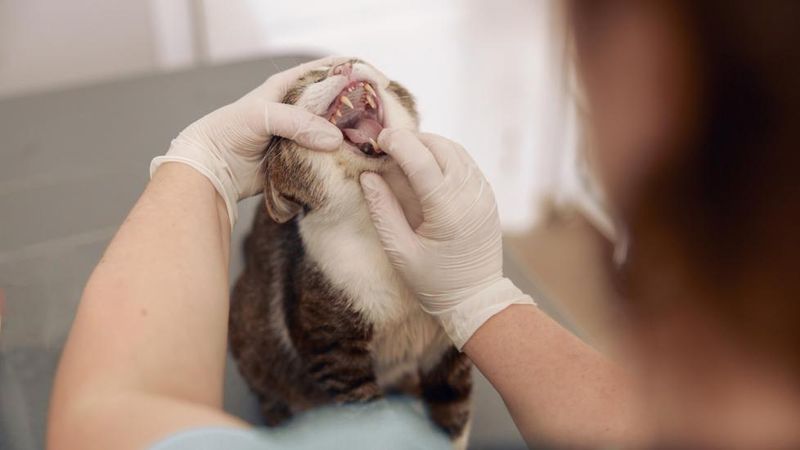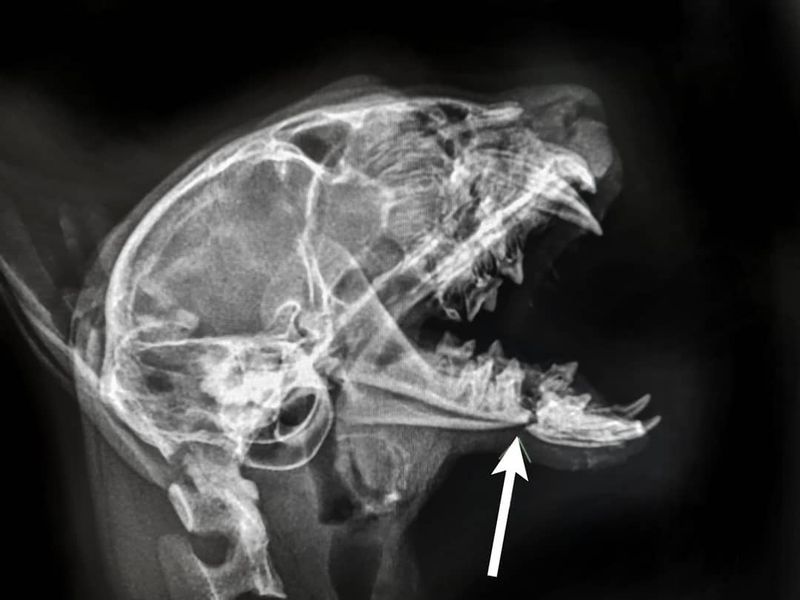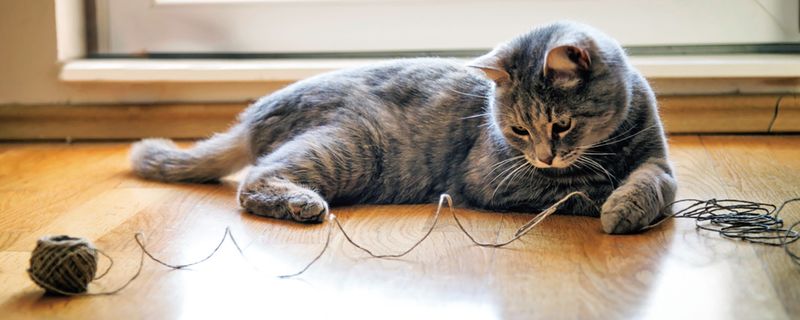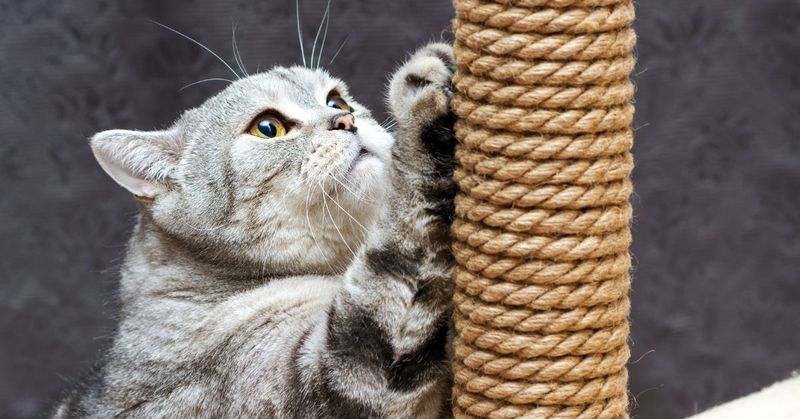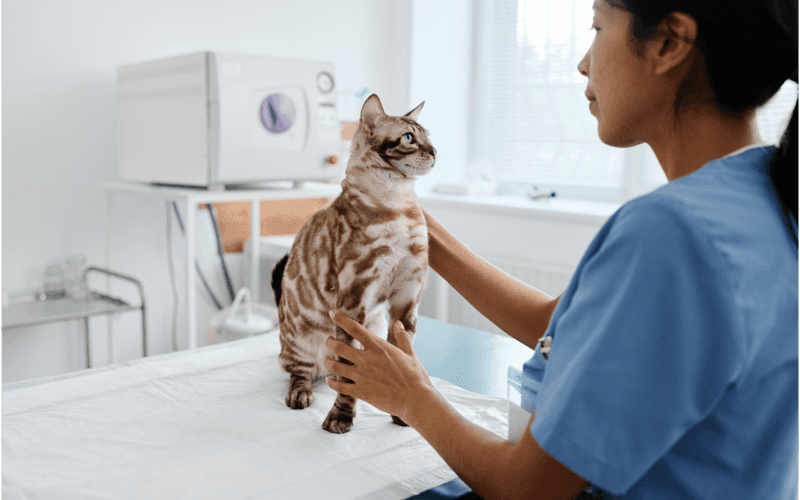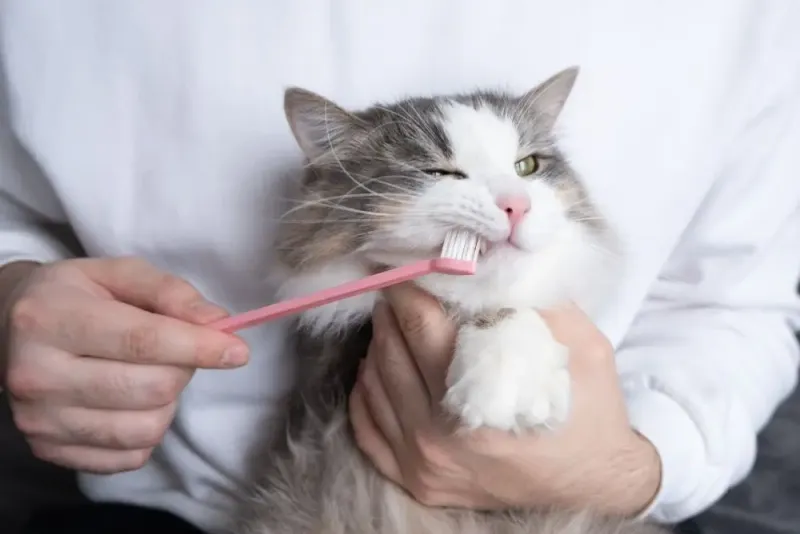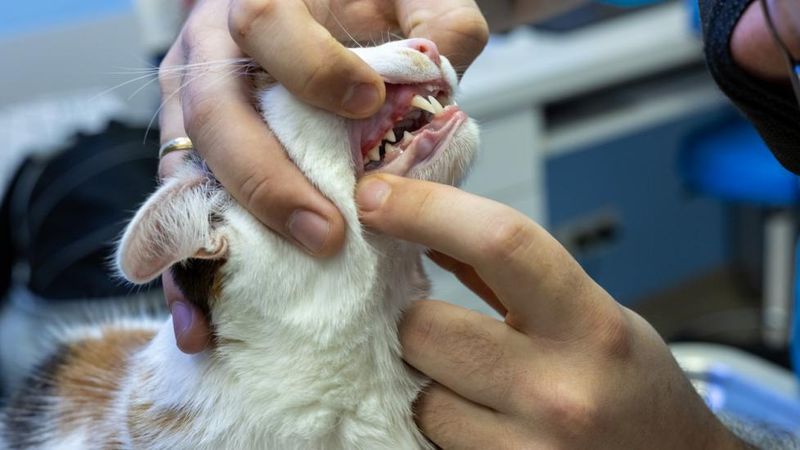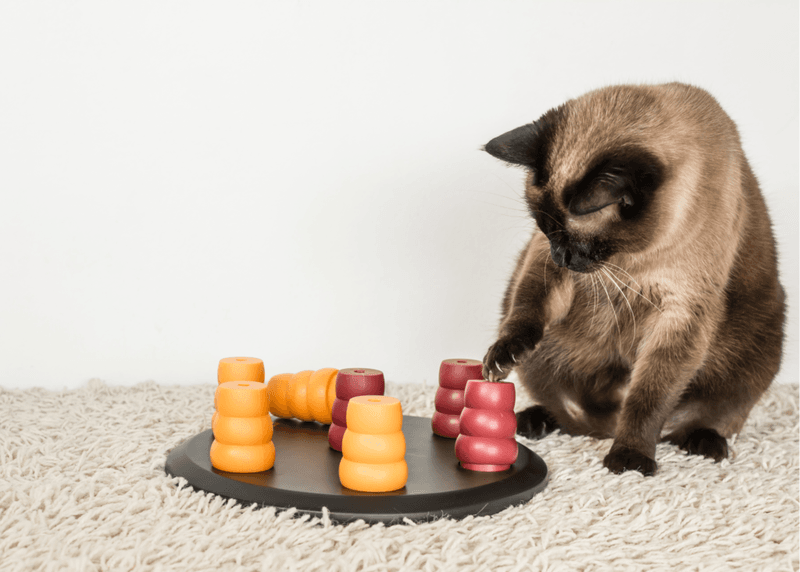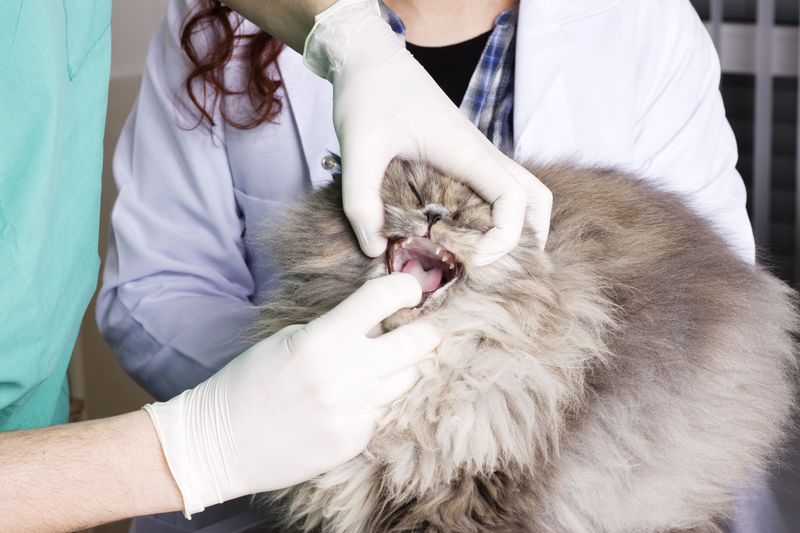📖 Table of Content:
- 1. Dental Problems
- 2. Oral Infections or Ulcers
- 3. Jaw or Bone Abnormalities
- 4. Foreign Object Stuck in the Mouth
- 5. Behavioral Habit or Stress Response
- 1. Schedule a Vet Check-Up
- 2. Improve Oral Hygiene
- 3. Inspect Their Mouth Gently
- 4. Provide Enrichment and Stress Relief
- 5. Monitor for Other Symptoms
Cats have a reputation for quirky behaviors, but some habits can leave owners scratching their heads. One such curious action is side chewing — when your cat tilts its head and appears to favor one side while eating or mouthing objects. At first glance, it might seem harmless or even amusing, but it’s often a clue that something deeper is going on.
Side chewing isn’t just a random behavior; it can signal anything from minor discomfort to more serious health concerns. Dental issues, injuries, or even emotional stress could all lie behind this odd chewing pattern. Recognizing the cause early on is essential because cats are masters at hiding pain, and what looks like a minor quirk could escalate into bigger health problems if left unchecked.
In this article, we’ll dive into five common reasons your cat might be side chewing and, most importantly, five practical ways you can help. Whether the solution is a simple toy upgrade or a necessary trip to the vet, understanding your cat’s needs will make a world of difference. Let’s get started on decoding this peculiar feline mystery!
1. Dental Problems
One of the most frequent culprits behind side chewing is dental pain. Cats can suffer from tooth decay, resorptive lesions, broken teeth, and periodontal disease just like humans. When chewing becomes painful on one side, a cat may instinctively shift its jaw or chew awkwardly to find relief. This change can happen slowly over time, making it easy to miss until the behavior becomes pronounced. Dental discomfort often leads to additional signs like bad breath, drooling, or pawing at the mouth. Without intervention, oral infections can spread and seriously affect a cat’s overall health. For this reason, any signs of unusual chewing should immediately raise dental health concerns.
2. Oral Infections or Ulcers
Beyond dental decay, oral infections and ulcers are another significant cause of side chewing. Bacterial infections, viral diseases like calicivirus, or chemical irritants can cause painful sores inside the mouth. When faced with raw or inflamed tissue, a cat might chew only on one side to avoid triggering intense discomfort. Observing your cat during mealtime or play can often reveal these subtle shifts in behavior before you notice visible signs. Infections left untreated can quickly worsen, leading to difficulty eating and dangerous weight loss. It’s essential to recognize that cats rarely show pain unless it becomes unbearable. Seeking early veterinary care can make treatment far simpler and faster for both you and your cat.
3. Jaw or Bone Abnormalities
Structural issues with the jaw or facial bones may also cause a cat to chew in a lopsided manner. Some cats are born with slight jaw misalignments (known as malocclusions), while others may develop abnormalities from trauma or disease. These physical challenges can force a cat to adapt its chewing to the side where alignment feels most comfortable. Even small injuries that go unnoticed by the owner can later affect how the cat handles food or toys. Fractures, bone infections, and tumors are less common but still important possibilities to consider. Ignoring jaw-related issues risks more than inconvenience; it can lead to chronic pain and difficulty eating. A full veterinary exam, including imaging if necessary, is crucial to diagnosing these hidden problems.
4. Foreign Object Stuck in the Mouth
Sometimes, the cause of side chewing is surprisingly straightforward — a foreign object lodged in your cat’s mouth. Tiny pieces of fur, string, plant material, or splinters can get stuck between teeth or gums, causing irritation and awkward chewing. Your cat might chew on one side, shake its head, or paw at its mouth in an attempt to dislodge the intruder. Unfortunately, if the object embeds itself deeply, it can quickly cause infection or abscesses. Attempting to remove something yourself can be risky and might worsen the situation if done incorrectly. If you suspect something is stuck, it’s safest to have a vet perform a gentle and thorough inspection. Prompt removal often relieves the issue immediately without lasting damage.
5. Behavioral Habit or Stress Response
Not all side chewing stems from physical pain; sometimes, it’s purely behavioral. Cats under stress or boredom may develop repetitive, quirky habits — and side chewing can be one of them. In these cases, side chewing may serve as a self-soothing behavior, much like humans twiddle their thumbs or bite their nails. Environmental changes like moving homes, a new pet, or lack of stimulation can easily trigger such behaviors. Even if no physical damage occurs initially, habitual side chewing can eventually harm teeth or soft tissues. Addressing the root emotional cause is critical to breaking the pattern before it becomes ingrained. Providing enriching toys, interactive playtime, and a calming environment can help your cat regain emotional balance.
1. Schedule a Vet Check-Up
Booking a veterinary appointment should be your immediate priority when you notice side chewing. Early diagnosis can prevent minor problems from becoming major health crises. Many oral health issues, injuries, and infections are invisible to the untrained eye. During the exam, the vet will carefully check for dental decay, ulcers, jaw misalignment, or foreign objects. Diagnostic imaging like dental X-rays may be recommended if the physical exam isn’t conclusive. Trusting a professional ensures that you get accurate advice instead of guessing what might be wrong. Your cat will thank you for acting quickly before discomfort worsens.
2. Improve Oral Hygiene
Incorporating good oral hygiene into your cat’s routine can drastically reduce the risk of side chewing behaviors in the future. Daily brushing with a cat-safe toothbrush and toothpaste removes plaque and keeps gums healthy. For cats that resist brushing, dental treats, special toys, or prescription diets can offer supplemental protection. Making dental care a positive experience with treats and praise can help overcome initial resistance. Ignoring dental hygiene, on the other hand, allows minor plaque buildup to escalate into painful infections. Even healthy-looking mouths can benefit from occasional professional cleanings at the vet. Proactive care now means fewer painful surprises later.
3. Inspect Their Mouth Gently
At home, doing a gentle mouth check can sometimes uncover obvious problems before your vet visit. Look for signs like swelling, redness, broken teeth, or any foreign material stuck between teeth or under the tongue. If your cat allows it, lift their lips carefully and examine both sides of the mouth. However, it’s crucial never to force their mouth open or cause additional stress if they resist. Gentle handling ensures that you avoid making any existing pain worse. If you notice anything suspicious, take a photo if possible and show it to your vet. Quick action based on your observations can significantly speed up diagnosis and treatment.
4. Provide Enrichment and Stress Relief
Keeping your cat’s environment mentally and physically stimulating can greatly reduce behavioral side chewing. Interactive toys, puzzle feeders, scratching posts, and new experiences keep a cat’s mind engaged. Stress often manifests physically in cats, and chewing can be a displaced behavior when emotional needs are unmet. Reducing boredom and anxiety with regular playtime and safe spaces fosters healthier habits overall. Introducing calming pheromone diffusers or offering high perches can help especially anxious cats. By addressing stress at its root, you can not only stop side chewing but also improve your cat’s overall well-being. Investing time into enrichment now prevents emotional issues from becoming physical health concerns later.
5. Monitor for Other Symptoms
Once you’ve noticed side chewing, staying observant about other emerging symptoms is critical. Watch for drooling, bad breath, bloody saliva, changes in appetite, or weight loss. These signs often accompany serious oral or systemic illnesses and require immediate veterinary attention. Keeping a written log of symptoms can help your vet piece together the full picture more accurately. Even subtle behaviors like more frequent head shaking or pawing at the face deserve attention. Sometimes problems escalate quietly in cats, so early detection can be life-saving. Never assume side chewing is “just a phase” — your vigilance could make all the difference.
